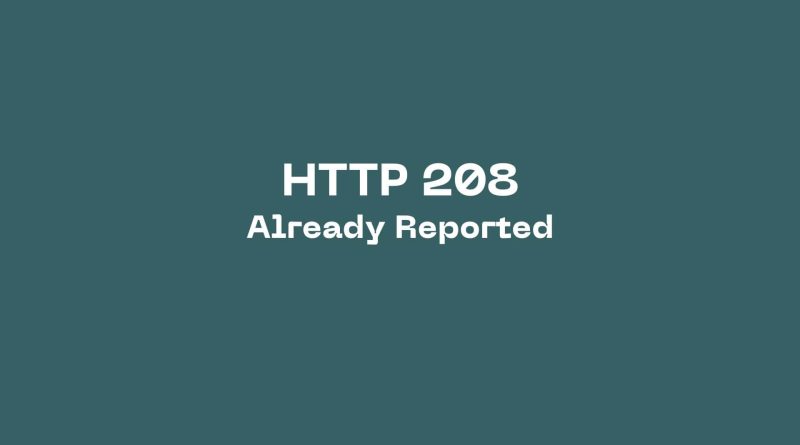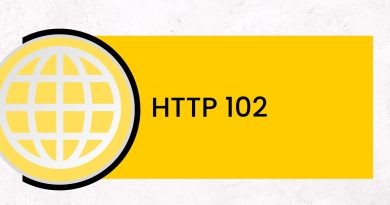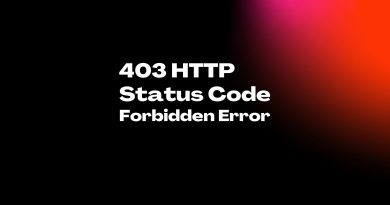HTTP 208 Already Reported: A Comprehensive Guide
The modern web is composed of millions of interconnected components. As such, the effectiveness of each component relies on proper communication between them. One important element in this process is HTTP status codes – they provide information about the response to a request made by a browser or other user agent. Among these codes is Status Code 208 – Already Reported: a powerful tool for managing content and ensuring smooth web operations. This comprehensive guide will explore what Status Code 208 does, how it works, and why it matters to businesses and developers alike.
What Is Http Status Code 208
HTTP Status Code 208 belongs to response status codes beginning with 2 which indicates the client’s request has been successfully received and acknowledged by the server. It was introduced in RFC 5842 to allow servers to notify clients of multiple bindings associated with a resource, as requested by the request headers and message body. This status code allows for a client’s request to be fulfilled even when it has already been reported elsewhere.
This makes HTTP 208 an important part of understanding the success of a request. Rather than simply returning ‘OK’ or ‘Created’ – which would not indicate whether the user had made any changes – this code provides information about what has happened on the server side. It should also be noted that this particular status code is often used alongside other codes in order to provide additional context and clarity.
This status code is typically used in the context of Web Distributed Authoring and Versioning (WebDAV) protocols when the client requests the status of multiple resources within the same collection. In this scenario, the server might process the request and return the response status codes for each resource in a separate set of response elements. The 208 status code informs the client that the request’s scope has been accepted by the server and that the client should expect response status codes and response elements that will be returned separately. The server can also include a Propstat response element that specifies the status of each resource in the collection.
The use of separate response codes and elements is intended to provide more detailed information about the status of each resource within the collection. This approach avoids the need for a generic error message that may not provide enough information to the client.
Overall, HTTP 208 is an essential part of understanding how responses are handled within an application or service stack. Providing more detail on exactly what has happened between two parties, helps ensure that both sides can make informed decisions based upon accurate data rather than assumptions only.
Is Http 208 An Indication Of Success Or Failure?
HTTP status code 208 is a unique response that indicates an already reported entity. It does not necessarily denote whether or not the request was successful; rather, its purpose is to inform the client that their request has been acknowledged and processed successfully.
Typically, when a request fails due to an error code or any other issue, the server will respond with an unsuccessful message – typically 4xx errors or 5xx errors. However, in some cases where a duplicate report is received by the server, it may respond with this status code as opposed to sending out another actual response. This informs the client that their request has already been registered on the server’s end but without providing further information about what this entails for them and their original query.
Ultimately then, HTTP 208 should be seen more as a notification than anything else; while technically part of ‘successful’ HTTP requests, it still doesn’t provide much clarity regarding how exactly your initial query has been handled. In essence, then, it’s neither indicative of success nor failure – merely an acknowledgment of a previously sent report.
Similar Status Codes To Http 208?
It is important to note that HTTP 208 should not be confused with other codes such as 200 OK or 201 Created. As compared to those two codes, HTTP 208 does not signify success nor does it signal failure; rather, it simply indicates that each part of an existing request was already reported in a prior response. In this case, the server reads the Status-Line and Request Method/Request Header Fields instead of processing any further requests from the client.
Given its specificity, similar status codes to HTTP 208 include 101 Switching Protocols (which serves as an indicator for protocols being switched); 203 Non-Authoritative Information (when a cacheable response is received but modified from stored version); 225 IM Used (used during protocol negotiation). All these status codes share common characteristics in terms of their purpose and usage and can help provide more detailed responses than generic codes like 200 OK.
Browser Compatibility Of Http 208
The compatibility of HTTP 207 is determined by the server software that is generating the response, rather than the client-side browser software that is interpreting the response. As long as the server software supports HTTP 207, the response will be compatible with all modern browsers.
All HTTP status codes by categories
Informational responses
(100 – 199)



